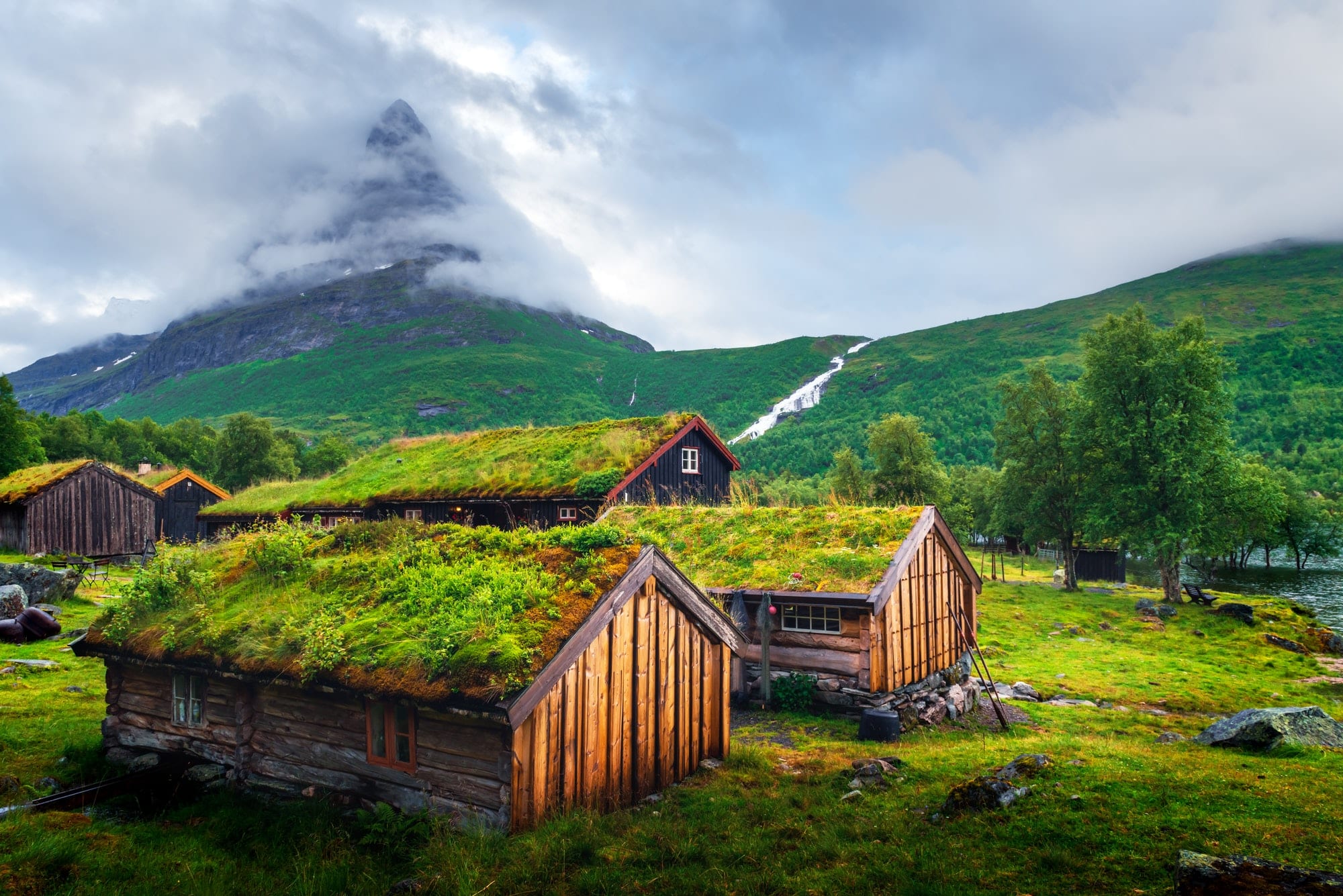In the midst of urbanization and industrialization, one word has floated above the rest: green. The green movement has swept across all sectors, including architecture and urban planning. Among the most prominent features of the movement is the implementation and promotion of green roofs in urban areas. As cities become more densely populated, air pollution and heat become more prevalent, posing challenges to public health and the overall quality of life. But how exactly does the installation of green roofs in urban areas affect local air quality and public health? We delve into this issue, using resources and data from esteemed sources such as Google Scholar and Crossref.
The Green Roof: A Solution for Urban Heat Islands
Urban areas, filled with concrete buildings and asphalt roads, tend to absorb and retain heat more than rural areas, creating what is known as ‘urban heat islands’. This phenomenon leads to higher energy consumption as city dwellers crank up their air conditioning to combat the heat. It also contributes to air pollution and heat-related illnesses. But this is where green roofs come in.
A lire en complément : Can the Use of Therapy Dogs in Hospitals Improve Patient Outcomes?
Green roofs are essentially roofs of buildings that are partially or completely covered with vegetation and a growing medium, installed over a waterproofing membrane. They serve as a cooling mechanism for buildings by providing shade and removing heat from the air through a process called evapotranspiration, where plants release water to the atmosphere.
According to a study published in the Environmental Science & Technology journal, green roofs can cool cities and reduce the urban heat island effect. The DOI (Digital Object Identifier) registered study found that green roofs could lower the need for air conditioning, therefore reducing the associated energy use and emissions.
Lire également : What Are the Best Exercises to Improve Core Strength for People with Lower Back Pain?
Green Roofs and Improvement of Air Quality
Air quality in cities has long been a cause for concern. Pollutants such as particulate matter, nitrogen oxides, and volatile organic compounds are often found in city air, and they pose serious health threats. The World Health Organization estimates that 4.2 million premature deaths annually are linked to ambient air pollution, primarily from heart disease, stroke, chronic obstructive pulmonary disease, lung cancer, and acute respiratory infections in children.
Green roofs can play a significant role in improving air quality. The vegetation on green roofs absorbs pollutants from the air, effectively purifying it. A study on the air purification potential of green roofs, accessible on Google Scholar and Crossref, found that green roofs could remove significant amounts of pollutants. The researchers calculated that in a city the size of Toronto, installing green roofs on 50% of the available roof area could remove 37.8 metric tons of air pollutants annually.
Health Benefits of Green Roofs
Along with the direct impact on air quality, green roofs can indirectly affect public health by reducing heat stress and promoting mental health.
Heat stress occurs when the body can’t cool down effectively, often due to high environmental temperatures. It can lead to heatstroke, a dangerous condition that requires immediate medical attention. By mitigating the urban heat island effect, green roofs can reduce instances of heat stress, contributing to overall public health.
Besides, green roofs can have psychological benefits. A growing body of research suggests that exposure to green spaces can reduce stress and promote mental well-being. A study published in the American Journal of Public Health found that people who lived within 1 km of green space had lower rates of fifteen diseases, including depression and anxiety.
Green Roofs: A Tool For Environmental Sustainability
While air quality and public health are of primary concern, the benefits of green roofs extend beyond these areas. They contribute to environmental sustainability in several ways.
First, they provide habitats for wildlife, increasing biodiversity in urban areas. Second, they manage stormwater runoff, reducing the risk of flooding and water pollution. Lastly, they contribute to the reduction of greenhouse gas emissions by lowering energy use and sequestering carbon.
Green roofs are more than just an aesthetic feature; they are a powerful tool for improving urban environments. As cities continue to grow and face environmental challenges, it’s imperative to explore and implement solutions like green roofs.
The Future of Green Roofs in Cities
Given the numerous benefits, it is clear that green roofs are an essential component of sustainable urban development. However, the adoption of green roofs varies widely across cities. Certain cities, like Toronto, have implemented bylaws requiring the installation of green roofs on new commercial, institutional, and residential developments. Other cities offer incentives, like tax credits, to encourage green roof installations.
While the initial installation of a green roof can be costly, the long-term benefits, such as energy savings, air quality improvement, and public health promotion, can offset these costs. Going forward, it will be crucial for city planners, policymakers, and residents alike to consider the benefits of green roofs and work towards their widespread adoption.
Through the installation of green roofs, cities can become more livable and sustainable places. They can provide cleaner air, cooler temperatures, and improved public health, making them a vital solution for the future of our urban landscapes.
Health Impact of Enhanced Air Quality and Reduced Heat Stress
The installation of green roofs in urban areas not only combats the detrimental effects of heat islands but also boosts air quality, providing notable health benefits for city dwellers.
Air pollutants such as particulate matter, nitrogen oxides, and volatile organic compounds can lead to respiratory diseases and even premature death. Green roofs have been found to absorb a significant amount of these pollutants, thereby purifying the air and reducing the risk of associated health problems. According to a study accessible via Google Scholar and Crossref, green roofs in a city the size of Toronto, if installed on 50% of available roof space, could eliminate 37.8 metric tons of air pollutants per year.
In addition to air quality improvement, green roofs also mitigate heat stress, a health risk associated with high environmental temperatures. Heat stress can lead to conditions such as heatstroke, which require immediate medical attention. By reducing the urban heat island effect, green roofs can lessen the occurrence of heat stress, consequently improving public health.
Furthermore, green roofs contribute to mental well-being. Research suggests that proximity to green spaces tends to lower stress levels and promote mental health. A study published in the American Journal of Public Health, available on PubMed Crossref, discovered that people living within 1 km of a green space had lower rates of fifteen diseases, including depression and anxiety.
Green Roofs in the Context of Environmental Sustainability
While the role of green roofs in improving air quality and public health is significant, they also have a broader part to play in environmental sustainability.
Green roofs create habitats for wildlife, thus fostering biodiversity in urban areas. They also manage stormwater runoff, reducing flood risks and water pollution. In terms of climate change, green roofs help by lowering energy consumption, thereby reducing greenhouse gas emissions, and by sequestering carbon. Therefore, green roofs could be a key part of the solution to the environmental challenges that urban areas face.
In view of their numerous benefits, it is of no surprise that green roofs are seen as a key tool for sustainable urban development. Nonetheless, their implementation varies greatly across cities. Some cities, like Toronto, have enacted bylaws mandating green roofs on new buildings, while others offer incentives such as tax credits to encourage their installation.
Despite the initial expense of installing a green roof, the long-term benefits, such as improved air quality, reduced energy consumption, and health promotion, can outweigh these costs. As such, it is crucial for city planners, legislators, and residents to consider the advantages of green roofs and advocate for their widespread use.
In conclusion, green roofs are not just an aesthetic feature; they are a powerful tool for improving air quality, reducing heat stress, and promoting sustainability in urban areas. By installing green roofs, cities can become healthier, more liveable, and more eco-friendly, making them a vital solution for the urban landscapes of the future.











